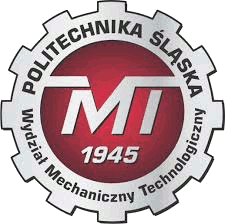Start - Aktualności - projekt
Title: Towards determining the synergy of strength and ductility: New generation of heterogeneous nanostructured Al-Si alloys - research on structure, mechanical properties and plastic deformation mechanisms Project no.: 2021/43/D/ST8/01946
Amount raised for the project: PLN 665,876
Duration: 24/06/2022 – 23/06/2025
Leader: Silesian University of Technology, Faculty of Mechanical Engineering
Project manager: Dr. Eng. Przemysław Snopiński
Project description:
Metal 3D printing is a dynamically developing industry that enables the production of complex metal parts using powders as raw materials. In the context of current market trends, the global 3D (metal) printing market is forecast to reach USD 19 billion by 2029. Currently, the dominant area of application of additive technologies is Rapid Prototyping, present in virtually all industries where final products require physical details. Their extensive use also increases expectations regarding the properties of these materials, especially the accuracy and quality of surface topography and their mechanical strength.
Compared to traditional production methods such as casting, the innovation of additive technologies may be perceived as a certain disadvantage, but at the same time it opens up many fascinating development prospects. Previous research, both on a laboratory and industrial scale, has focused on improving mechanical properties by assessing the impact of production parameters, heat, chemical or surface treatment. However, little work has been devoted to alternative post-processing processes in which intense plastic deformation is the final step.
The main technological challenge resulting from the synergy of two technologies, i.e. selective laser melting (SLM) and intensive plastic deformation, is the limited plastic formability of metal alloys obtained from 3D printing. This results, among other things, from thermally induced residual stresses. On the other hand, very rapid cooling in the SLM process (105–106 K/s) promotes the formation of a unique, heterogeneous microstructure from hard (mantle) and soft (core) areas.
The solution proposed in the project includes designing/adapting the heat treatment process of elements made using 3D printing technology in such a way as to maintain as much as possible the unique (metastable) heterogeneous microstructure, while improving the indicators describing ductility.
The concept of innovative technology for the production of Al-Si alloys with high strength and plasticity is based on a heterogeneous microstructure - a soft Al core/hard Si cladding. During intense plastic deformation, the deformation gradient leads to the development of long-range internal stresses. These stresses are accommodated by geometrically necessary dislocations, which at the same time constitute obstacles to the movement of statistically stored dislocations, thus intensifying the process of microstructure fragmentation.
The improvement of mechanical properties will be achieved as a result of the synergistic effect of several strengthening mechanisms - fragmentation of the microstructure and accumulation of defects/obstacles (for statistically stored dislocations) by geometrically necessary dislocations (GNDs), generated in the early stage of plastic deformation of the heterogeneous material. At the same time, ductility is expected to improve by maintaining the strain gradient accommodated by the resulting long-range stresses.
The research carried out as part of the project aims to observe fundamental deformation phenomena on the micro and nanometric scale in order to determine the impact of return stresses on the strain hardening ability (i.e. the ability to store plastic deformation energy) of Al-Si alloys obtained by selective laser melting (SLM).










